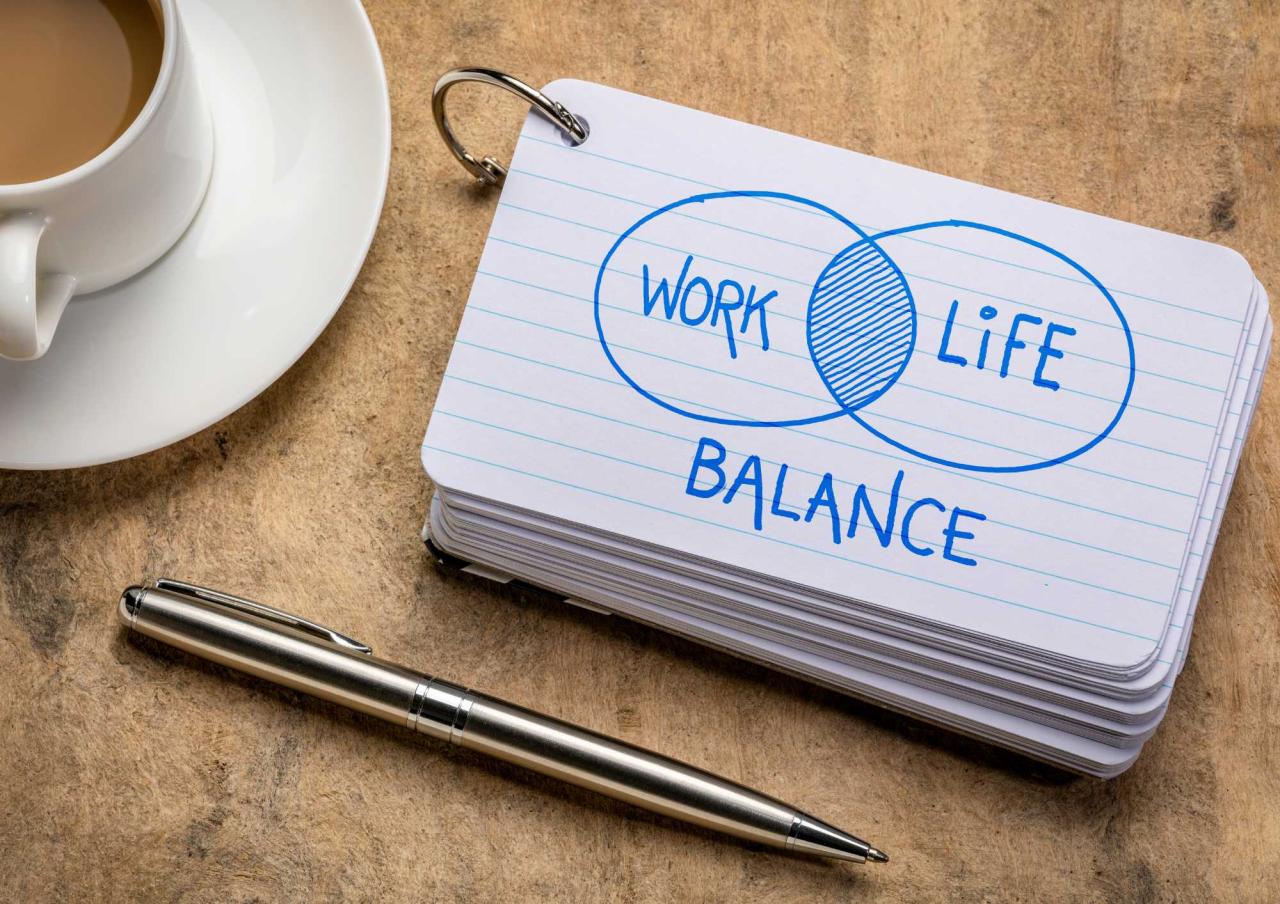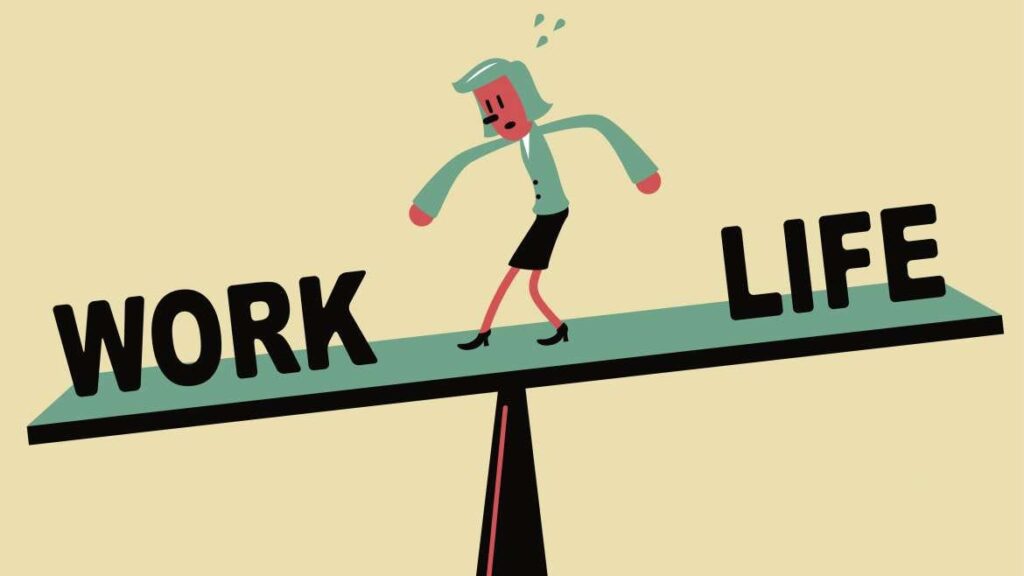In today’s hyper-connected, always-on world, achieving work-life balance feels less like an attainable state and more like an elusive dream. The lines between professional obligations and personal life have blurred, leading to increased stress, burnout, and a diminished quality of life for countless individuals. However, the pursuit of equilibrium is not merely a personal quest; it’s a critical imperative for sustainable productivity, long-term well-being, and even the health of organizations. For anyone seeking to reclaim their time, energy, and joy, understanding and implementing modern work-life balance strategies is paramount. This isn’t just about managing schedules; it’s about fundamentally reshaping our approach to work, life, and personal boundaries. For content creators, this topic resonates deeply with a global audience, making it a high-value subject for SEO and maximizing Google AdSense revenue through insightful, actionable content. This comprehensive guide will explore the evolving definition of work-life balance, dissect the contemporary challenges that hinder it, and unveil innovative, actionable strategies designed to foster a healthier, more fulfilling integration of our professional and personal selves.
The Evolving Definition of Work-Life Balance
The traditional notion of work-life balance often implied a rigid, 50/50 split between work and personal life. However, this static view fails to capture the dynamic realities of modern careers and individual lives. Today, a more nuanced understanding prevails: work-life balance isn’t about equal time allocation but about achieving a sense of fulfillment and control across all domains of your life, ensuring neither work nor personal responsibilities consistently override the other. It’s about flexibility, adaptability, and psychological well-being.
Key shifts in understanding include:
- From Balance to Integration: Instead of two separate scales needing perfect equilibrium, many now view it as a fluid integration where work and life intertwine, requiring adaptable boundaries rather than rigid walls.
- Personalization: What constitutes “balance” is highly individual. It varies based on life stage, career goals, personal values, family commitments, and cultural context. There’s no universal formula.
- Focus on Well-being: The ultimate goal isn’t just efficiency but sustained physical, mental, and emotional health. Burnout prevention and stress reduction are central.
- Dynamic and Iterative: Work-life balance isn’t a destination you arrive at; it’s an ongoing process of adjustment and refinement as life circumstances change.
This modern perspective acknowledges the complexities of contemporary life and emphasizes the importance of individual agency in crafting a life that feels sustainable and satisfying.
Contemporary Challenges to Achieving Balance
Despite increased awareness, numerous pervasive challenges make work-life balance more elusive than ever. Recognizing these obstacles is the first step toward overcoming them.
A. The Always-On Culture and Digital Overload
The advent of smartphones, ubiquitous internet access, and remote work technologies has eroded traditional work boundaries.
- 24/7 Connectivity: Emails, messages, and notifications follow us everywhere, making it difficult to truly disconnect from work.
- Blurred Boundaries: The home often becomes an extension of the office, blurring the physical and psychological separation between work and personal life.
- Expectation of Responsiveness: There’s a growing unspoken expectation for immediate replies, even outside of working hours, fueling anxiety and preventing true rest.
- Information Overload: Constant digital input from various sources contributes to mental fatigue and makes it harder to focus.
B. Increased Workload and Performance Pressures
Modern workplaces often demand more with fewer resources, creating a culture of overwork.
- Leaner Teams: Companies often operate with smaller teams, leading to individuals shouldering more responsibilities.
- Performance Metrics: Intense focus on KPIs and targets can create immense pressure to constantly perform at peak levels, often at the expense of personal time.
- Globalized Economy: Working with teams or clients across different time zones can extend the workday significantly.
- Fear of Job Insecurity: Economic uncertainties can push individuals to overwork, fearing that taking time off might jeopardize their position.
C. The Rise of Remote and Hybrid Work Models
While offering flexibility, these models introduce new challenges for work-life integration.
- Lack of Physical Separation: Without a commute or distinct office space, it’s harder to mentally “switch off” from work.
- Increased Meetings and Digital Communication: Remote work can lead to “Zoom fatigue” and an endless stream of digital interactions replacing casual office encounters.
- Difficulty Setting Boundaries: It’s often harder for remote employees to signal when they are “off duty” or to resist the urge to check work emails at odd hours.
- Isolation and Lack of Social Connection: Reduced in-person interaction can impact mental well-being and a sense of belonging, paradoxically contributing to overwork as a substitute for social engagement.
D. Societal Expectations and “Hustle Culture”
Powerful cultural narratives often glorify overwork and sacrifice, framing rest as weakness.
- Glorification of Busyness: There’s a pervasive societal belief that being constantly busy equates to importance, success, and high value.
- Fear of Missing Out (FOMO): Social media often highlights others’ professional achievements, fueling a sense of needing to do more.
- Perfectionism: The drive for perfection can lead to endless hours spent on tasks, long after they’re “good enough.”
- Parental Guilt: Working parents often grapple with guilt about not spending enough time with family, leading to attempts to compensate by overworking in both domains.
New Strategies for Mastering Work-Life Balance
Achieving sustainable work-life balance in this complex environment requires a proactive, intentional, and often unconventional approach. Here are innovative strategies that go beyond simple time management.
A. Redefining Boundaries: Flexible, Not Firm
Instead of rigid walls, think about creating adaptive fences that protect your personal time while allowing necessary flexibility.
- Time Blocking for Non-Work Activities: Schedule personal time (e.g., gym, family dinner, hobbies) in your calendar with the same priority as work meetings. Treat these blocks as non-negotiable.
- Digital Detox Rituals: Establish clear “off-limits” times for work devices (e.g., no emails after 7 PM, no phone in the bedroom). Consider specific days (e.g., Sundays) for a complete digital break.
- Communicate Your Boundaries: Proactively inform colleagues and clients about your availability. “I will respond to emails between 9 AM and 5 PM” sets clear expectations.
- Transition Rituals: Create a routine to signal the end of the workday, especially for remote workers. This could be a short walk, changing clothes, or engaging in a hobby immediately after work to mentally shift gears.
- Designated Workspaces: Even in a small home, try to establish a physical boundary for work, even if it’s just a specific chair or corner. Avoid working from your bed or sofa.
B. Strategic Productivity: Work Smarter, Not Just Harder
Optimize your work processes to maximize output within defined hours, reducing the need for excessive overtime.
- Prioritization Frameworks: Utilize methods like the Eisenhower Matrix (Urgent/Important) to focus on high-impact tasks and delegate or eliminate low-value activities.
- Batching Similar Tasks: Group similar activities (e.g., responding to emails, making calls, administrative tasks) and tackle them in dedicated blocks to reduce context-switching overhead.
- Deep Work Blocks: Schedule uninterrupted periods for focused, cognitively demanding tasks, free from distractions. Communicate these blocks to colleagues.
- The Two-Minute Rule: If a task takes less than two minutes, do it immediately to prevent small tasks from accumulating and becoming overwhelming.
- Automate and Delegate: Identify repetitive tasks that can be automated with software or delegated to colleagues, virtual assistants, or external services.
C. Embracing Disconnection: The Power of Intentional Breaks
Regular, intentional breaks are crucial for mental rejuvenation and sustained performance.
- Micro-Breaks: Take short breaks (5-10 minutes) every hour to stretch, walk around, or look away from your screen.
- Lunch Break Rituals: Step away from your desk for lunch. Go for a walk, meet a friend, or engage in a non-work activity. This refreshes your mind.
- Active Recovery: Engage in activities outside of work that genuinely recharge you, such as exercise, spending time in nature, pursuing hobbies, or connecting with loved ones. Avoid passive consumption (e.g., endless scrolling) as your primary form of rest.
- Scheduled Vacations (and unplugging): Take your vacation days. Crucially, commit to genuinely disconnecting from work during these periods to allow for full mental and physical recovery.
- Digital “Off” Switch: Learn to put your phone away, turn off notifications, or even power down devices when you are with family, friends, or engaged in personal activities.
D. Cultivating Self-Awareness and Self-Compassion
Understanding your personal energy patterns and needs is fundamental to sustainable balance.
- Energy Auditing: Track when you feel most energized and most drained throughout the day or week. Align your most demanding tasks with your peak energy times.
- Recognizing Burnout Signs: Learn to identify early warning signs of stress and burnout (e.g., irritability, constant fatigue, cynicism, difficulty concentrating) and take proactive steps to address them.
- Saying “No” Effectively: Learn to decline commitments that don’t align with your priorities or capacity without guilt. Offer alternatives where appropriate.
- Prioritizing Sleep: View sleep not as a luxury but as a non-negotiable biological necessity. Optimize your sleep environment and routine.
- Mindfulness Practices: Regular mindfulness or meditation can help you stay present, reduce rumination about work, and cultivate a sense of inner calm.
- Seek Support: Don’t hesitate to talk to trusted friends, family, mentors, or a therapist if you’re struggling to manage your workload or maintain balance.
E. Leveraging Technology Mindfully
Technology can be a double-edged sword. Use it as an enabler of balance, not a detractor.
- Notification Management: Customize notifications, turning off non-essential alerts to reduce constant interruptions.
- Productivity Apps: Use apps for task management, focus timers (e.g., Pomodoro technique), or digital well-being features that track screen time.
- Automation Tools: Explore tools that automate repetitive tasks (e.g., email filters, scheduling assistants) to free up mental bandwidth.
- Communication Protocols: Work with your team to establish clear communication guidelines (e.g., preferred communication channels, response times) to reduce ambiguity and “always-on” pressure.
- Flexible Work Software: Utilize tools that enable seamless remote or hybrid work, facilitating collaboration without requiring constant physical presence.
F. Advocacy at the Organizational Level
True work-life balance often requires support and systemic changes from employers.
- Promote Flexible Work Policies: Advocate for and embrace flexible work hours, compressed workweeks, or remote/hybrid options where feasible.
- Lead by Example: Managers and leaders play a crucial role. When leaders model healthy work-life integration, it creates a psychological safe space for others to do the same.
- Prioritize Well-being Initiatives: Encourage companies to invest in mental health support, stress management programs, and initiatives that genuinely promote employee well-being.
- Clear Expectations: Encourage organizations to set clear, realistic expectations regarding workloads, response times, and after-hours communication.
- Measure Outcomes, Not Hours: Shift focus from “time spent” to “results achieved.” This empowers employees to manage their time more effectively.
The Future of Work-Life Balance: A Holistic Perspective

The conversation around work-life balance is continually evolving, driven by technological advancements, shifts in societal values, and a growing recognition of the human cost of unsustainable work patterns.
A. The “Great Resignation” and Employee Empowerment
The recent surge in resignations highlights a global reassessment of priorities, with many individuals unwilling to sacrifice personal well-being for work. This empowers employees to demand more flexible, humane work environments.
B. AI and Automation as Enablers
While often feared, AI and automation have the potential to take over mundane, repetitive tasks, freeing up human workers for more creative, strategic, and less time-consuming work. This could be a significant enabler of better balance.
C. Focus on Mental Health and Burnout Prevention
Companies are increasingly recognizing that employee mental health is not just a personal issue but a critical business imperative. Investment in mental health resources, stress reduction programs, and burnout prevention strategies will become more common.
D. The Four-Day Work Week Experiment
Various companies globally are experimenting with a four-day work week, often demonstrating increased productivity, higher employee satisfaction, and improved well-being without a reduction in pay. This model challenges traditional notions of work duration.
E. Individualized Work Arrangements
The future will likely see more personalized work arrangements, tailored to individual needs and life stages, moving away from a rigid, one-size-fits-all approach to employment. This includes customized hours, project-based work, and increased autonomy.
F. Global Digital Nomadic Lifestyle
The ability to work from anywhere continues to grow, allowing individuals greater freedom to integrate work with travel and personal passions, albeit with its own unique set of boundary-setting challenges.
Crafting a Life of Purpose and Presence

Achieving work-life balance in the modern era is undoubtedly a complex undertaking, but it is an endeavor that yields profound dividends for both individuals and organizations. It moves beyond a simple division of time to embrace a more fluid, personalized, and holistic integration of our professional aspirations with our personal well-being. By proactively implementing new strategies for boundary setting, optimizing productivity, embracing intentional disconnection, cultivating self-awareness, and leveraging technology mindfully, individuals can reclaim control over their lives. Furthermore, advocating for supportive organizational cultures that prioritize employee well-being is crucial for systemic change. The ongoing shift in societal values, driven by lessons from recent global events and technological advancements, positions work-life balance not as a luxury but as the cornerstone of sustainable careers and fulfilling lives. By committing to these new strategies, you don’t just manage your time; you transform your entire experience, fostering a life rich in purpose, presence, and genuine well-being, ultimately creating content that resonates deeply and drives significant engagement for search engine optimization.











